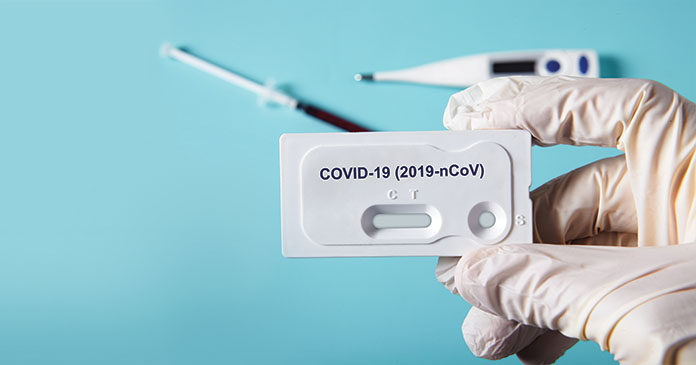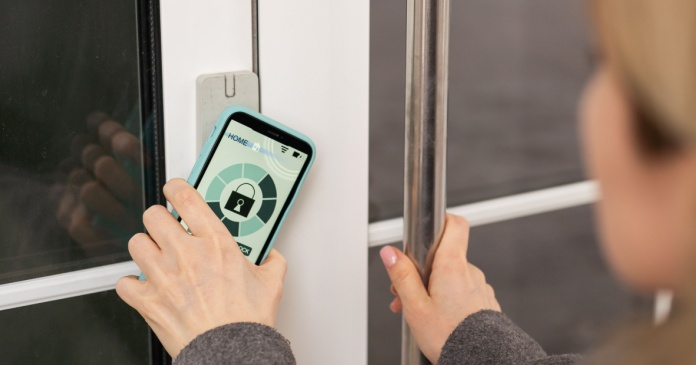
“Testing is the biggest problem that we’re facing,” Peter Slavin, president of Massachusetts General Hospital, said recently in a roundtable on COVID-19 at Harvard Medical School. While South Korea had tested about 4,000 people per million of its population at the time, the United States had just run five tests per million—despite the fact that they both reported their first cases at essentially the same time (on January 21 and 20). The discrepancy was surprising because the genome of the virus had been available since January and scientists had figured out the diagnostics shortly thereafter, using proven molecular methods first discovered in the 1970s.
The value of a test comes from its so-called specificity and sensitivity: Infected patients should be correctly identified as infected, patients who don’t carry the virus should be diagnosed as such, and people that unknowingly had the infection should be tested for immunity. This helps us understand who is infected, where the infection occurred, and how the virus was transmitted.
Testing is also needed to address the uncertainty in making decisions about patient treatment, resource allocation, policy, and so much more. Answers to questions such as “When should we relax social distancing measures—and for whom?” or “How many ventilators are needed in hospitals?” are vital to our economic recovery and public health outcomes and cannot be answered without reliable test data. To find answers requires organizations in which testing is embraced (in action and orientation) by every employee, from top to bottom. “Test early and often” needs to be an organization’s ethos.
The question of testing
If testing is so valuable, why wasn’t the U.S. prepared to deploy tests quickly, even before COVID-19 hit the country? In recent weeks, the American media has focused on the Centers for Disease Control and Prevention’s (CDC) flawed test kits, the reluctance of the Food and Drug Administration (FDA) to approve new tests, manufacturing problems, and government red tape.
I have studied and written about testing for more than two decades and can tell you that the central reason is often culture. For virtually all organizations—not just those in health care—having a testing strategy and building a culture to execute it are crucial when dealing with a crisis. Time and again, I have seen how as organizations try to scale testing capacity, they often find that the obstacles are not technology, but shared behaviors, beliefs, and values. Testing early and often is often viewed as wasteful in the eyes of organizations that emphasize efficiency and predictability. That’s until, of course, the opportunity cost of not testing becomes blatantly obvious and precious time and lives have been lost.
To reduce uncertainty, organizations need to make testing an integral part of what they do—even when budgets are tight. A good test will show what does and does not work and improve decision-making, whether it’s about the design of a product, the implementation of a new policy, or how to treat patients.
But here is the dilemma: Despite being awash in information coming from every direction, today’s decision-makers operate in an uncertain world where they lack the right data to inform strategic and tactical decisions. Consequently, for better or worse, their actions tend to rely on experience, intuition, and beliefs. But this all too often doesn’t work.
What does work is creating an environment where employee curiosity is nurtured, data trumps opinions, and leaders embrace a new model of managing. Although my research has identified more cultural elements, I believe that the three below are especially important during the COVID-19 crisis.
Cultivate curiosity. Testing will surprise people, by definition: We test to figure out what we don’t know. Everyone in an organization, from the leadership on down, needs to value such surprises, despite the difficulty of assigning a dollar figure to them and the impossibility of predicting when and how often they’ll occur. Curious people thrive when they feel safe in their workplace and are not blamed for discovering inconvenient truths. When firms adopt this mindset, curiosity will prevail, and people will see wrong predictions not as costly mistakes but as opportunities for learning.
In test cultures, employees are undaunted by the possibility that they are wrong. “The people who thrive here are curious, open-minded, eager to learn and figure things out, and OK with being proven wrong,” a senior manager who oversees all testing at Booking.com, the world’s largest online accommodations platform, told me. The firm’s recruiters look for such people, and to make sure that they’re empowered to follow their instincts, the company puts new hires through a rigorous onboarding process, which includes training on its online test platform, and then gives them access to all testing tools.
Insist that data trumps opinions. The test results must prevail with few exceptions when they clash with strong opinions, no matter whose opinions they are. This must be the attitude of leaders, but it’s rare among most organizations for an understandable reason: human nature. We tend to happily accept “good” results that confirm our biases but challenge and thoroughly investigate “bad” results that go against our assumptions. Unless this simple fact is recognized, leaders will never appreciate the true value of early tests and prioritize them. Surprises from such tests are especially desirable when few commitments have been made and organizations have time to react.
Getting the top ranks to abide by this rule isn’t easy. (As the American writer Upton Sinclair once quipped, “It is difficult to get a man to understand something when his salary depends upon his not understanding it.”) But it’s vital that they do: Nothing stalls the mobilization of testing resources faster than a so-called HiPPO—highest-paid person’s opinion. Note that I’m not saying that all decisions can or should be based on tests alone. Some things are very hard, if not impossible, to conduct tests on—for example, strategic calls on whether to acquire a company. But if everything that can be tested is tested, it will fuel healthy management debates and become instrumental to decision-making under uncertainty.
Embrace a different leadership model. If most decisions follow tests, is there anything left for senior leaders to do, beyond developing an organization’s strategic direction and tackling big decisions such as which acquisitions to make? Of course—in particular:
Set a grand challenge. Employees need to see how large-scale testing supports an overall strategic goal. The grand challenge needs to be broken down into testable hypotheses and key performance metrics. Only then can organizations get aligned and work toward a common objective, such as X tests by date Y.
Put in place systems, resources, and organizational designs that allow for large-scale testing. Scientific testing requires infrastructure: instrumentation, data pipelines, scientists, people, and materials if tests are physical. Reliable tests may be available, but to scale things up, senior leaders must tightly integrate the testing capability into an organization’s processes. Doing so requires striking the right balance between centralization and decentralization. It also requires a sense of urgency: leaders need to resist the so-called Not Invented Here Syndrome—the unwillingness to accept outside solutions that work.
Be a role model. Leaders have to live by the same rules as everyone else and subject their opinions, ideas, and decisions to tests. “You can’t have an ego, thinking that you always know best,” Booking.com’s former CEO told me. “If I, as the CEO, say to someone, ‘This is what I want you to do because I think that it’s good for our business,’ employees would literally look at me and say, ‘OK, that’s fine, we are going to test it and see if you are right.’” Bosses ought to display intellectual humility and be unafraid to admit, “I don’t know.” They should heed the advice of Francis Bacon, the father of the scientific method: “If a man will begin with certainties, he shall end in doubts; but if he will be content to begin with doubts, he shall end in certainties.”
Most of all, leaders need to understand that words can affect behavior. If test evidence isn’t explicitly valued or invited because they may interfere with public relations or other goals, progress will be impeded. The conclusion of Richard Feynman, the famous physicist who participated in the investigation of the 1986 Challenger space shuttle accident, ring especially true during these difficult times: “…reality must take precedence over public relations, for nature cannot be fooled.”
Excerpt Stefan Thomke, author of Experimentation Works: The Surprising Power of Business Experiments.












